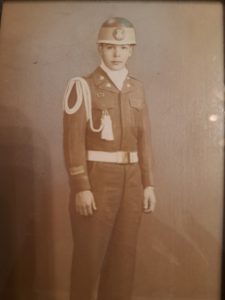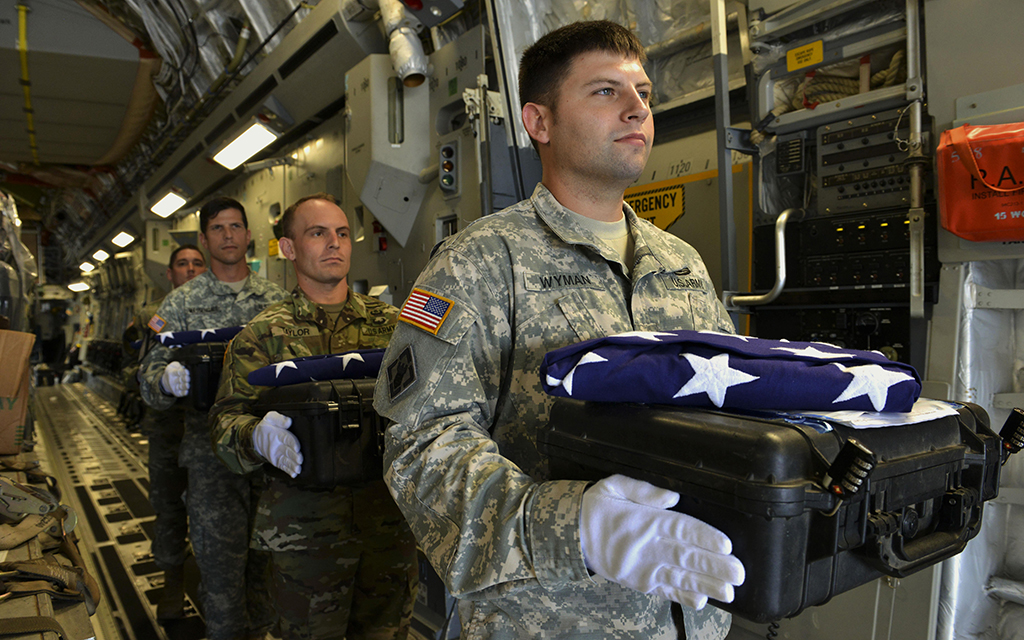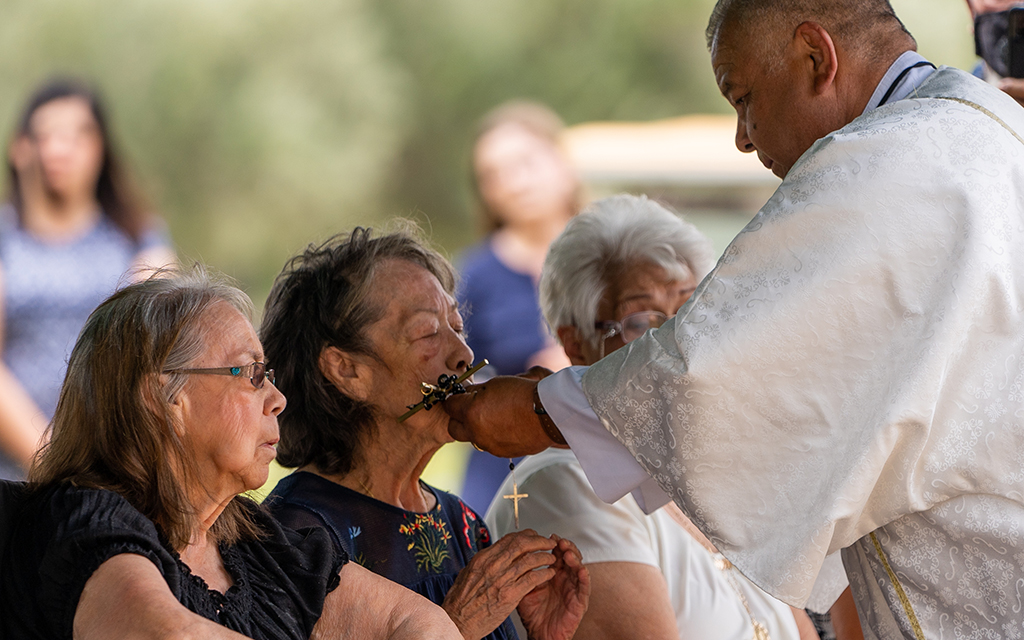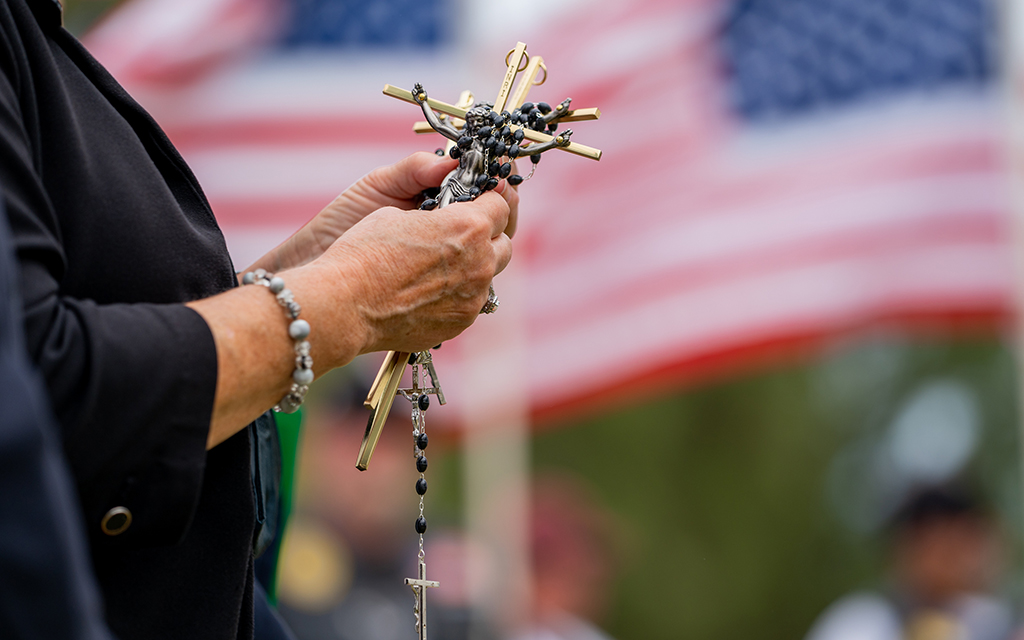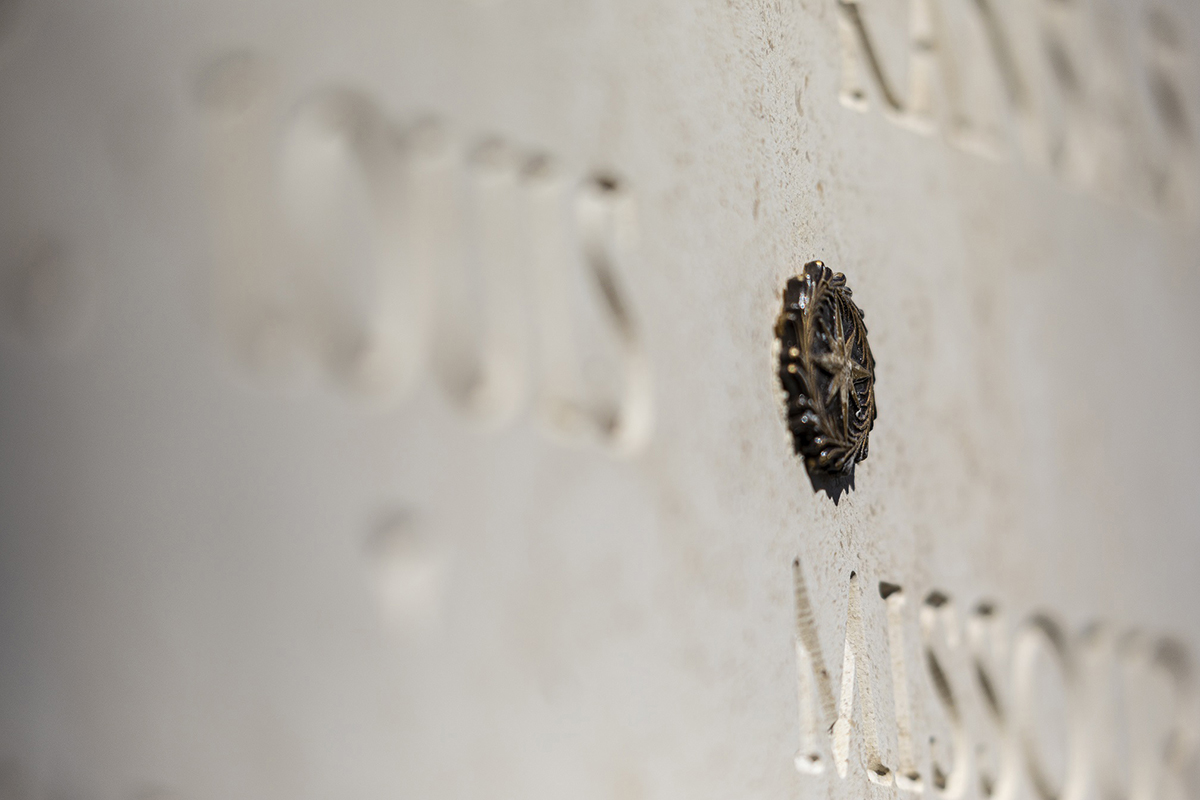‘Would he be forgotten?’ How a niece’s crusade and military scientists led to ID of Korean War vet
‘Would he be forgotten?’ How a niece’s crusade and military scientists led to ID of Korean War vet

A photo of Army Pvt. Felix Yanez in uniform sits outside the Chapel of Light at the Funeraria del Angel South Lawn in Tucson on Sept. 3, 2022, during his funeral. Yanez was mortally wounded on July 16, 1950, in South Korea. (Photo by Samantha Chow/Cronkite News)

Tammi Shreeve gives a eulogy for Yanez, her uncle, at the Chapel of Light at the Funeraria del Angel South Lawn. Shreeve never met her uncle but spent 10 years searching for his remains, which had gone unidentified since 1950, when he died in combat in Korea. (Photo by Samantha Chow/Cronkite News)
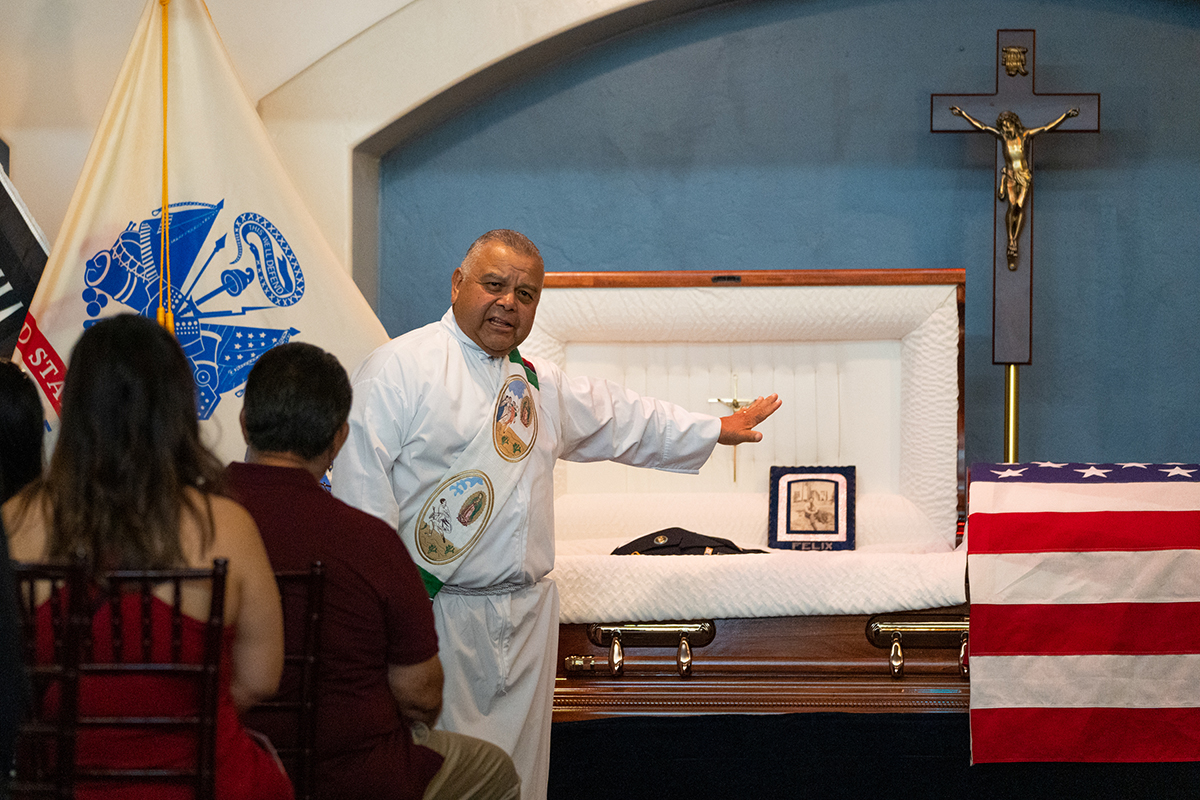
Deacon Nick De La Torre performs a funeral service for Yanez, who was killed in action in 1950. (Photo by Samantha Chow/Cronkite News)

A photo of Yanez and some friends sits outside the chapel. (Photo by Samantha Chow/Cronkite News)
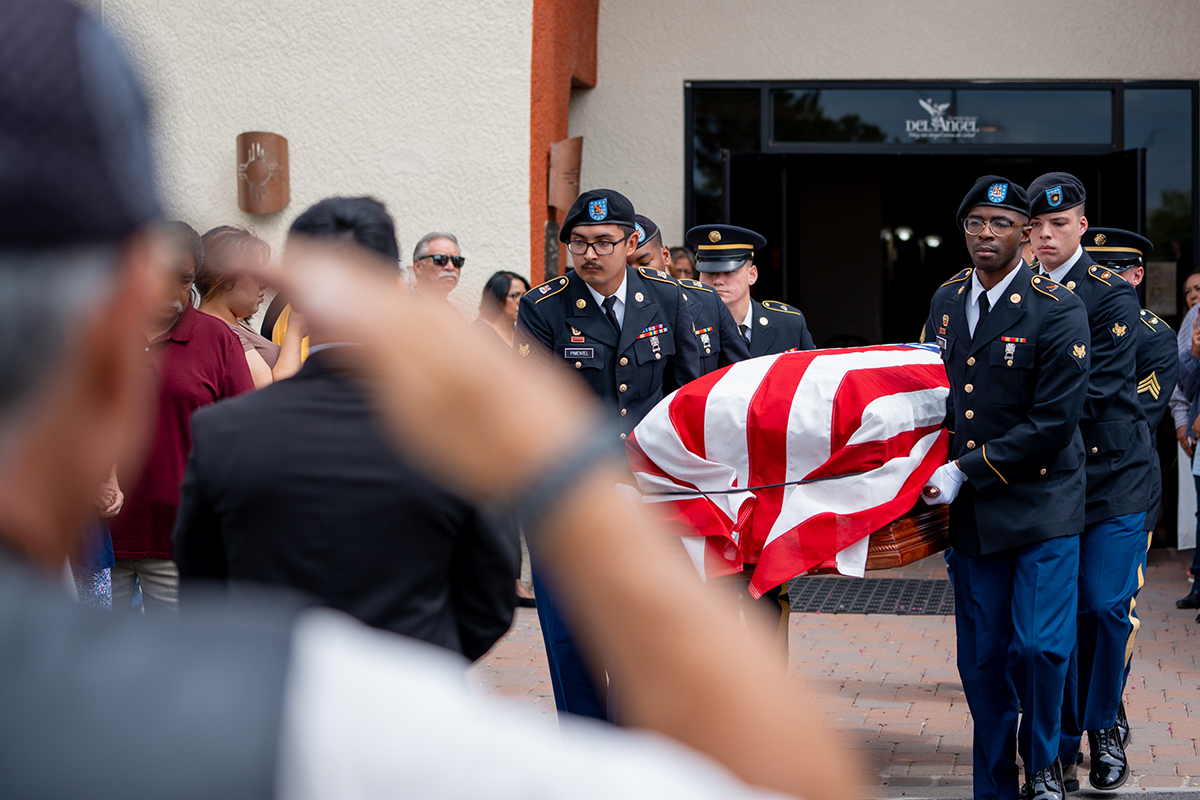
Members of the Fort Huachuca Select Honor Guard carry Yanez’s casket to a hearse at South Lawn Cemetery in Tucson. (Photo by Samantha Chow/Cronkite News)
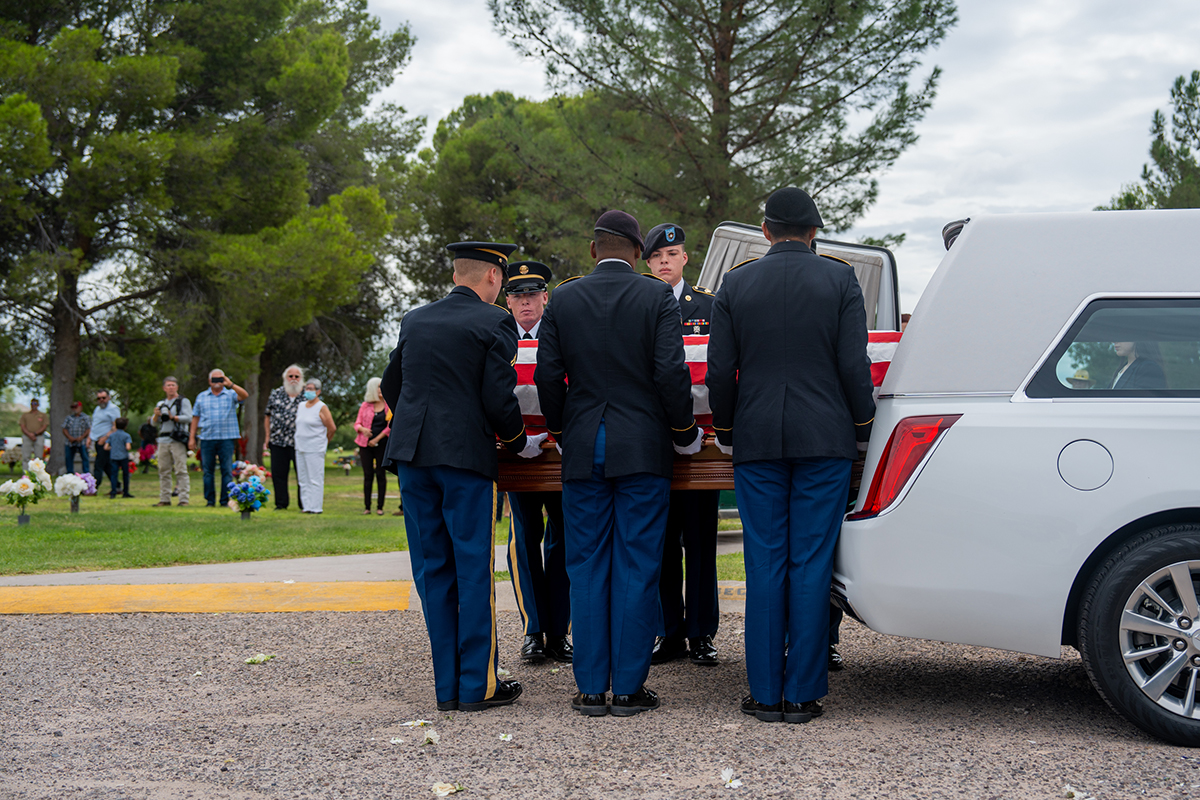
Members of the Fort Huachuca Select Honor Guard carry Yanez’s casket at South Lawn Cemetery. (Photo by Samantha Chow/Cronkite News)
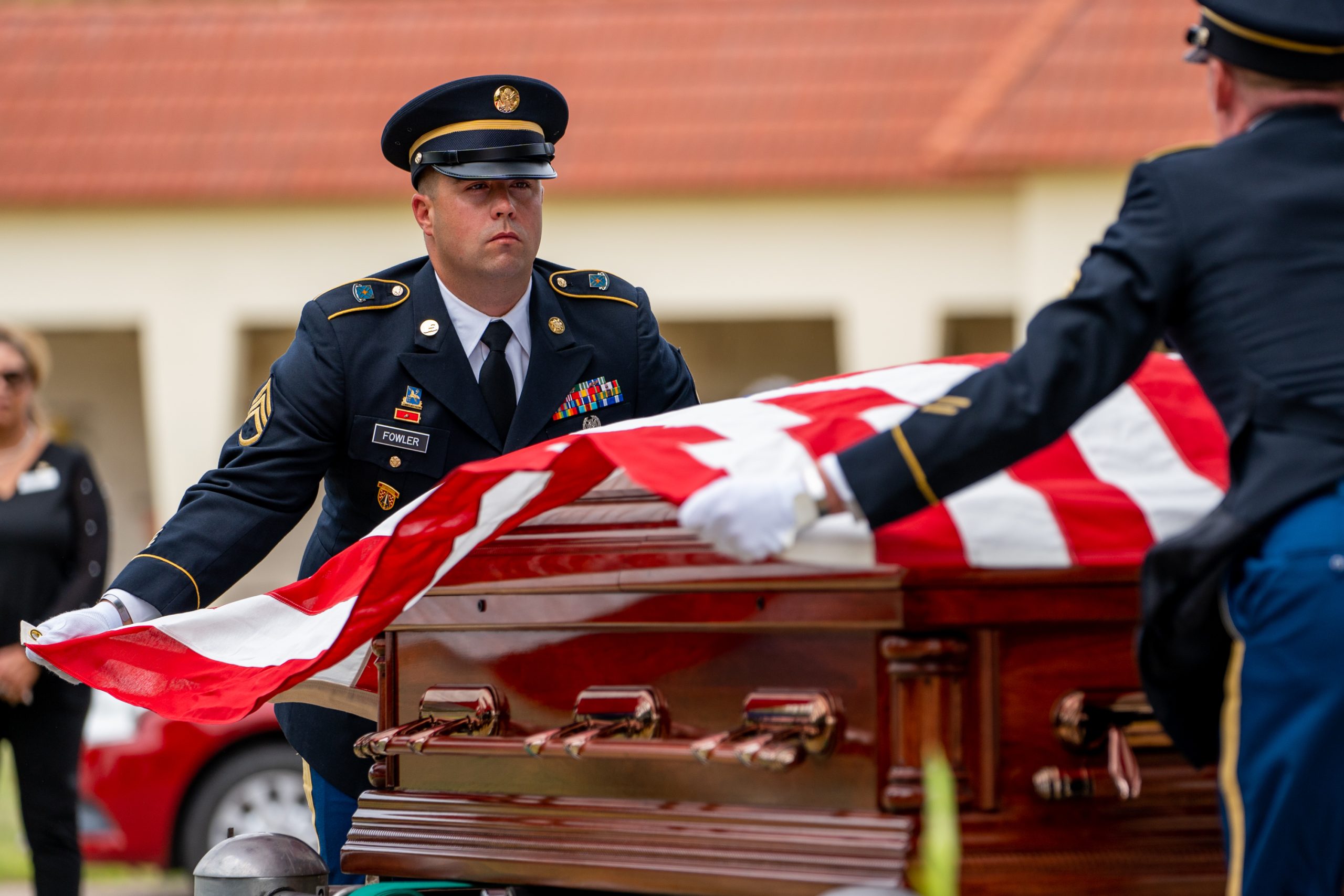
Fort Huachuca Select Honor Guard members Jacob Fowler, back, and Jake Nowaczyk perform a flag-folding ceremony in honor of Yanez at South Lawn Cemetery. The flag is folded 13 times in remembrance of the original 13 colonies. (Photo by Samantha Chow/Cronkite News)
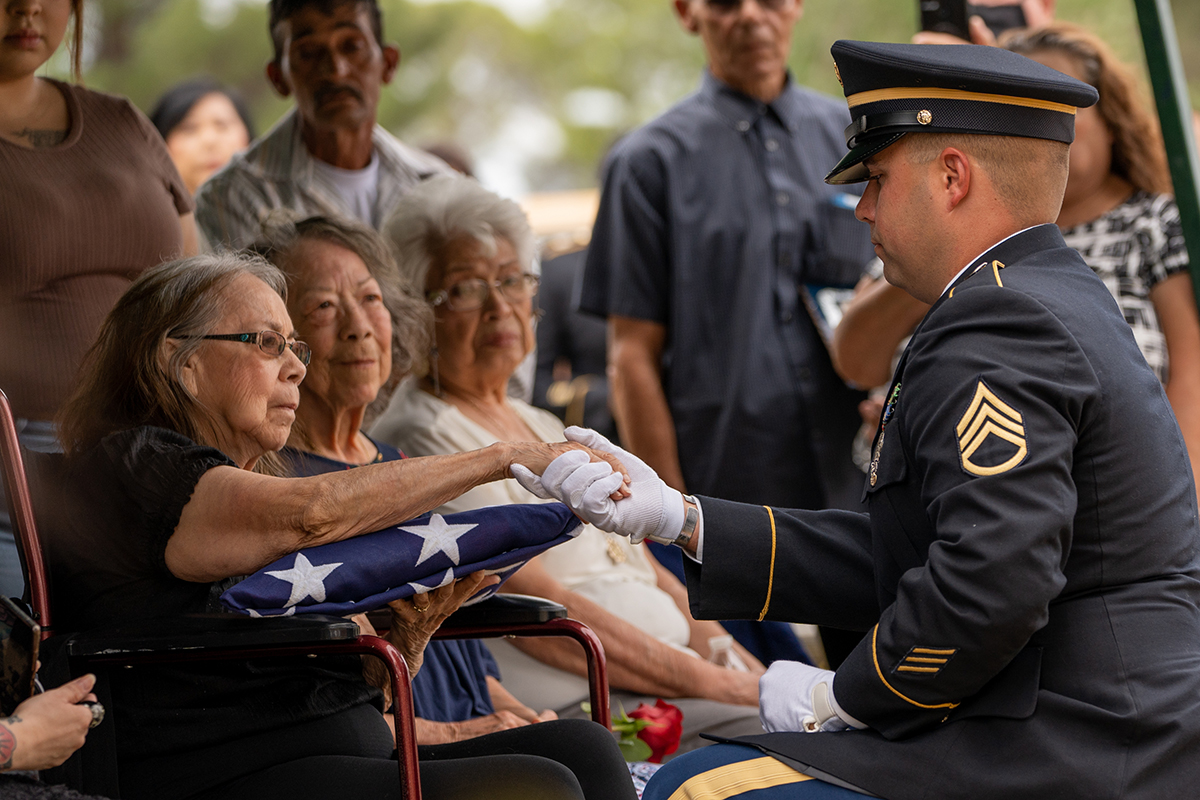
Fort Huachuca Select Honor Guard member Jacob Fowler presents a folded U.S. flag to Lupe Salazar, Yanez’s sister, at South Lawn Cemetery. Salazar and Connie Cintron are Yanez’s only living siblings. (Photo by Samantha Chow/Cronkite News)

Salazar holds a folded flag, crucifix and rosary in her lap during the funeral for Yanez, her late brother. (Photo by Samantha Chow/Cronkite News)
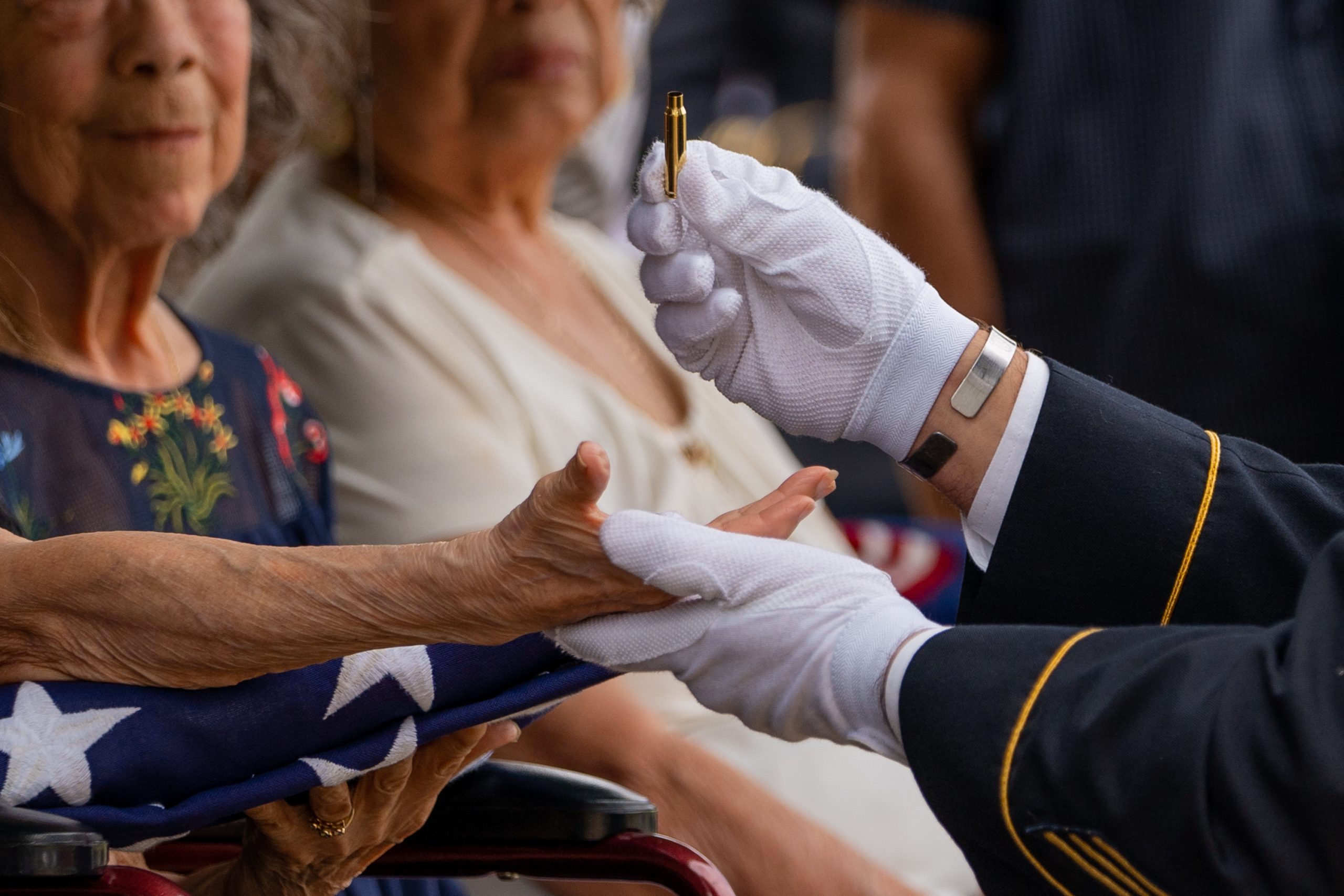
Fort Huachuca Select Honor Guard member Jacob Fowler presents a shell casing to Lupe Salazar, Pvt. Felix Yanez’s sister, at South Lawn Cemetery. (Photo by Samantha Chow/Cronkite News)
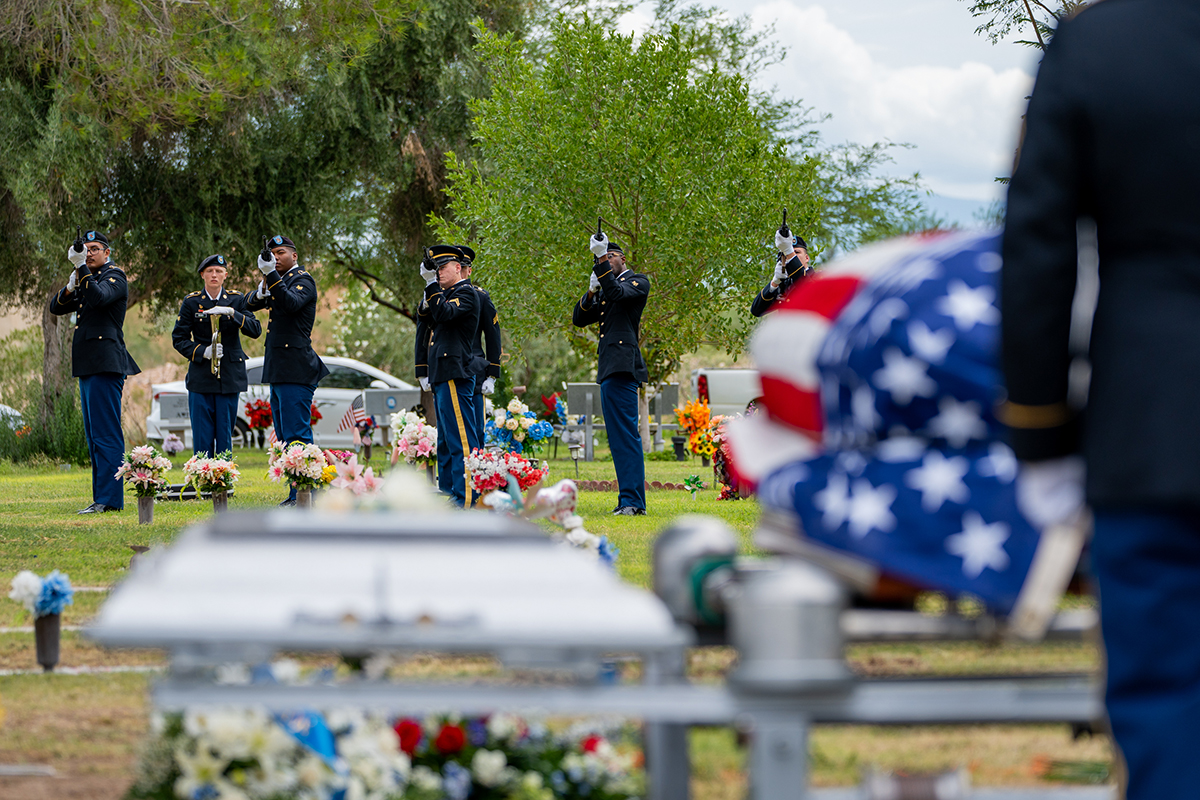
Members of the Fort Huachuca Select Honor Guard fire a rifle salute at Yanez's burial. (Photo by Samantha Chow/Cronkite News)
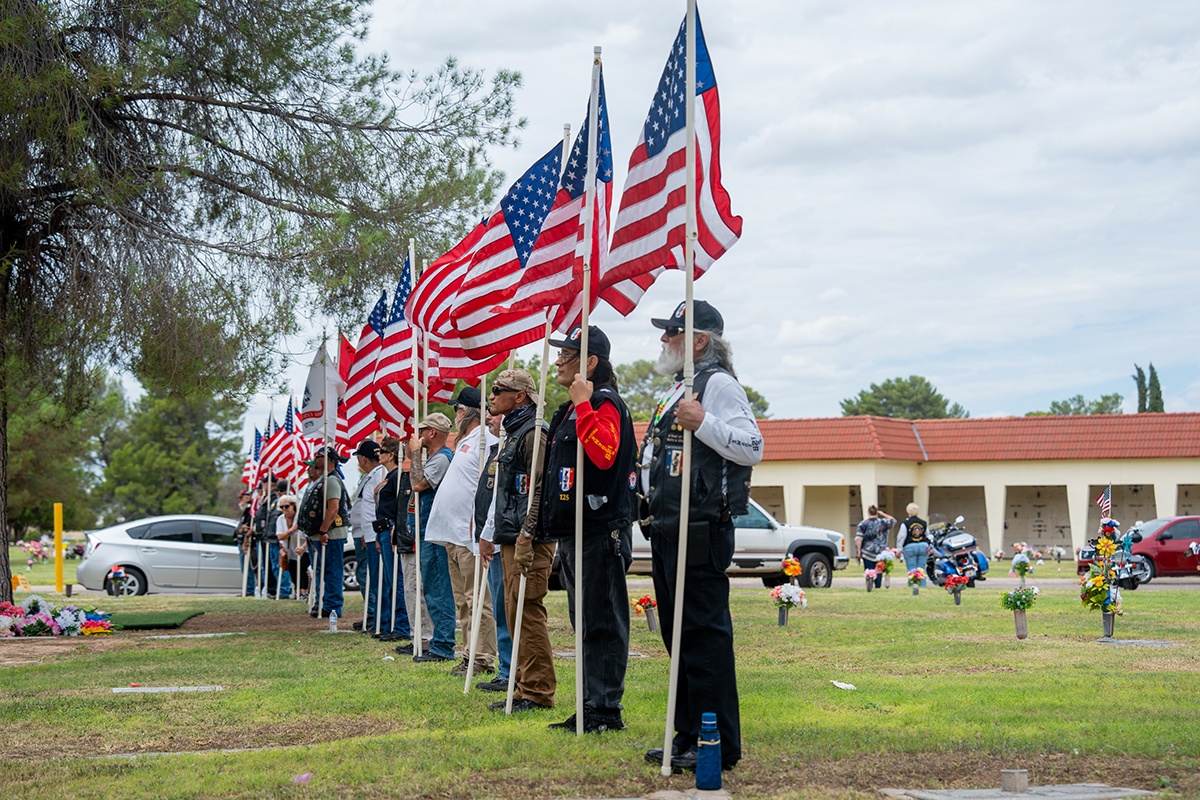
Several members of the Phoenix Patriot Guard Riders hold flags in honor of Yanez at South Lawn Cemetery. (Photo by Samantha Chow/Cronkite News)
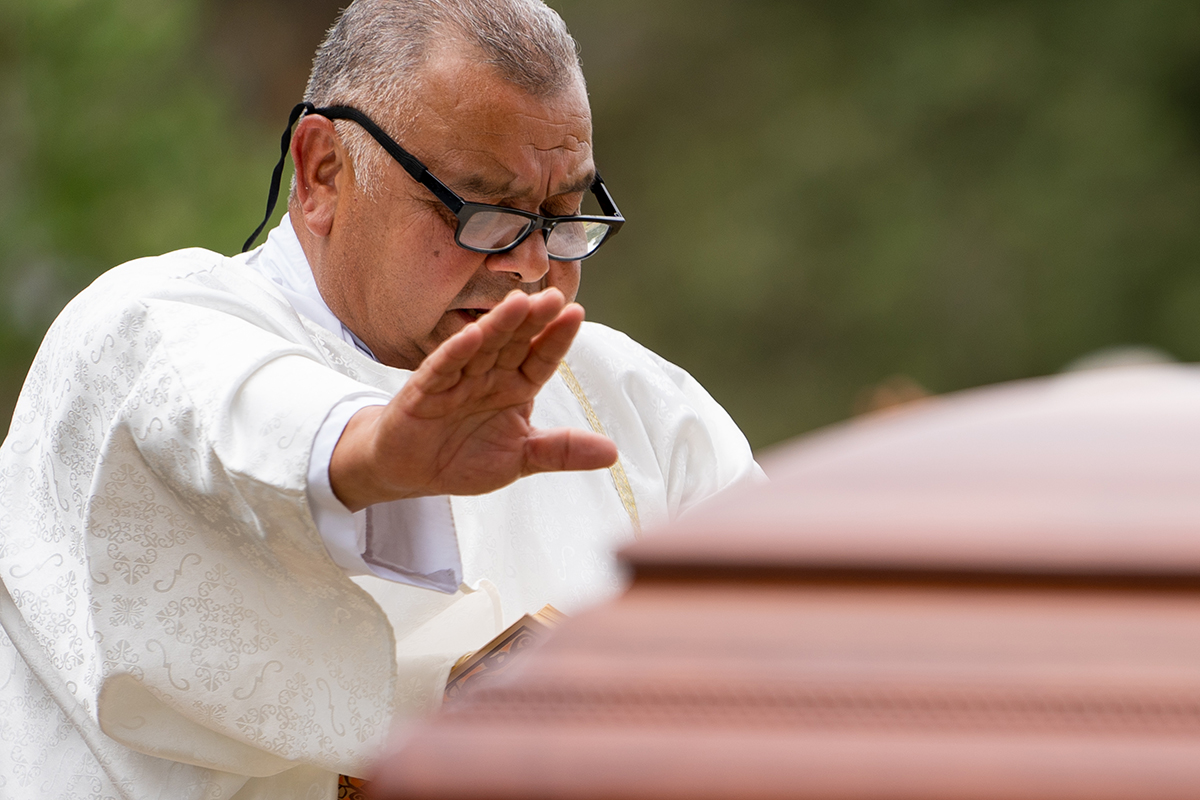
Deacon Nick De La Torre prays over Yanez’s casket at South Lawn Cemetery. (Photo by Samantha Chow/Cronkite News)
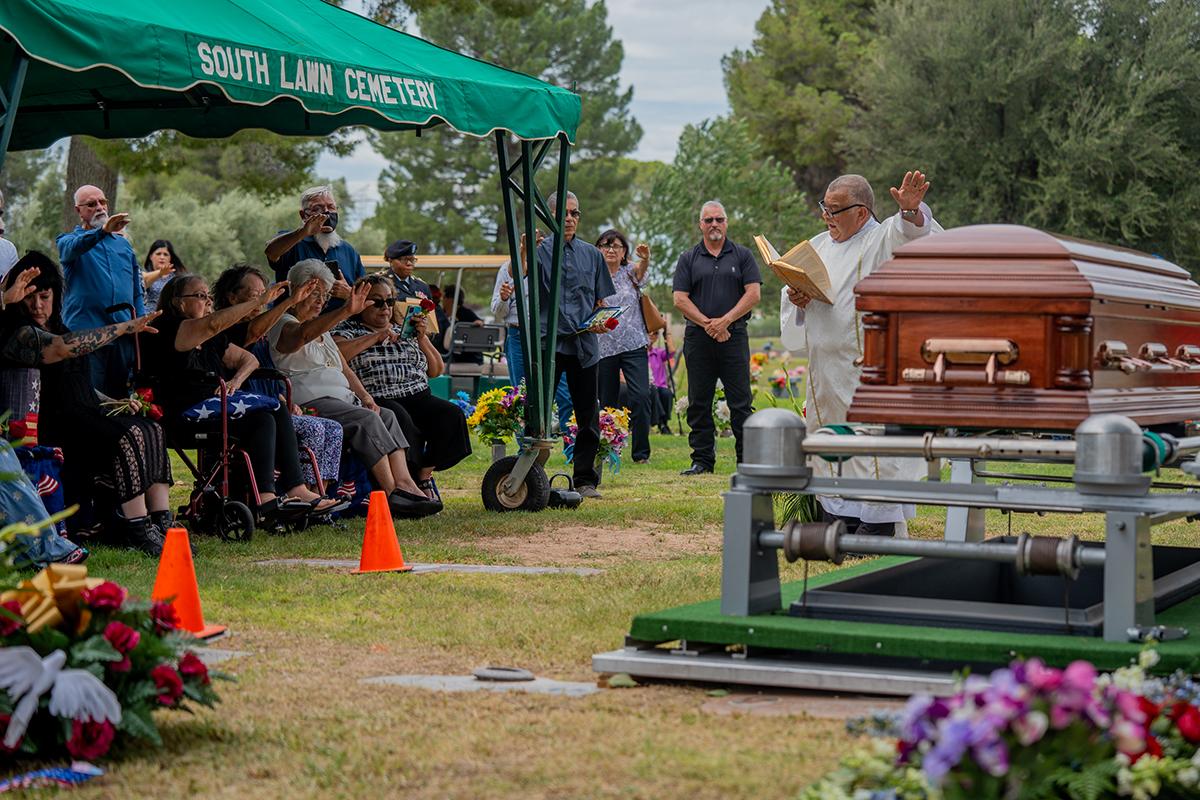
Deacon Nick De La Torre performs a funeral service for Yanez at South Lawn Cemetery. (Photo by Samantha Chow/Cronkite News)

Brothers Ricky, front, and Ray Cintron place red roses on the casket of their uncle, Pvt. Felix Yanez, at South Lawn Cemetery. Neither had met their uncle, who died in 1950 in the Korean War. (Photo by Samantha Chow/Cronkite News)
